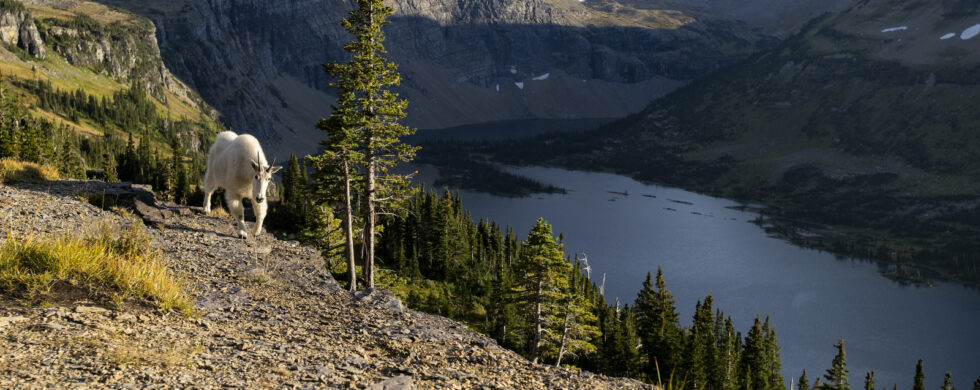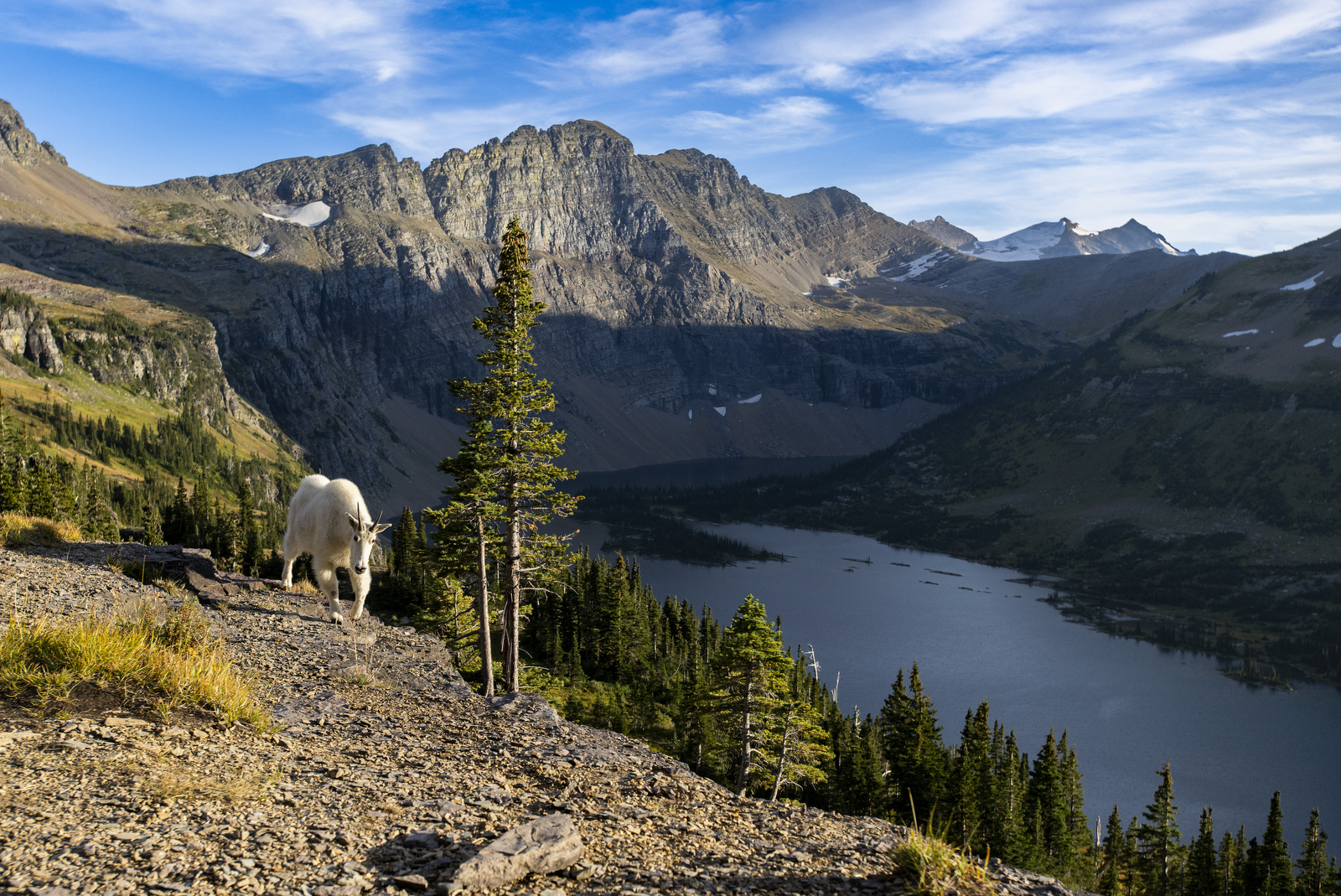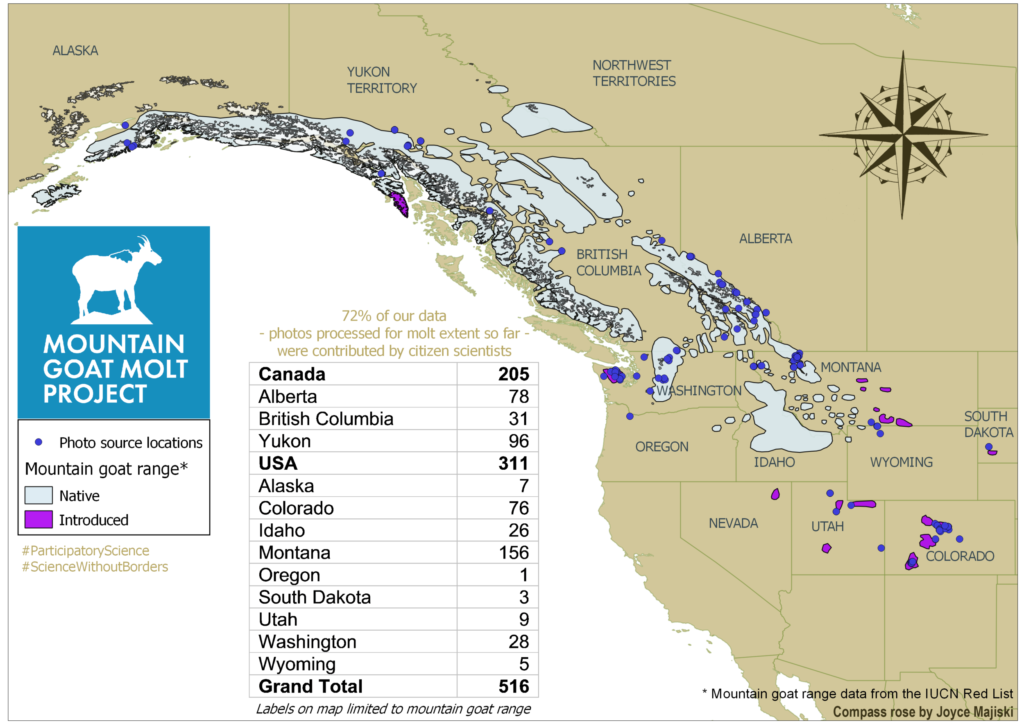
31
2022Mountain Goat
Shot of the Month – December 2022
If you want to see a Mountain Goat (MG) you are going to have to put some steps in. And I don’t mean those comfortable, flat-land steps. Oh no, that won’t get the job done. We are talking about some serious vertical steps. You gotta go up, up, and more up.
These elusive creatures thrive at elevations where few other animals roam – Mountain Goats can be found at elevations of 13,000 feet (4,000 m) or more. In the photo above, taken at Hidden Lake in Glacier National Park in Montana, I got off lucky and “only” had to climb to about 6,400 feet (2000 m) in elevation to get this scenic shot. (6400 feet is about 600 flights of stairs)
By spending much of their time above the tree line Mountain Goats can avoid most predators. When they do tread to lower altitudes they can be hunted by cougars, wolves, wolverines, lynxes, and bears. Of that list of threats, the cougar is the most worrisome as they are uniquely nimble to navigate the rocky ecosystem of the goats and are large enough to overwhelm even the largest Mountain Goat adult.
Mountain Goats are found in the alpine and subalpine environments of the Rocky Mountains, the Cascade Range, and other mountain ranges in western North America. You can find them in Washington, Idaho, Montana, and through British Columbia and Alberta, into the southern Yukon and southeastern Alaska. British Columbia is home to about half of the known population of Mountain Goats.
Mountain Goats remain one of the least-studied large mammals in North America due to the difficulty of reaching their rugged ecosystems and the creature wasn’t even mentioned in scientific literature until 1816!
Mountain Goats have been introduced, primarily for hunting purposes, into parts of Idaho, Wyoming, Utah, Nevada, Oregon, Colorado, South Dakota, and the Olympic Peninsula of Washington. Several of these states are now, however, starting to remove these non-indigenous populations of goats due to the adverse impact they are having on the ecosystems and other species (read more about this here). For example, Mountain Goats can introduce bacterial disease that can wipe out the indigenous Big Horn Sheep – a species that is already struggling with various threats.
In the map below you can see the historical range of Mountain Goats and the areas where the species has been introduced by humans (shown in purple):
False Advertising:
Despite their name, Mountain Goats (Oreamnos americanus) are not goats. MGs are actually in the bovidae family so they are more closely related to antelopes, gazelles, and cattle.
Mountain Goat Nomenclature:
Male MG: billy
Female MG: nanny
Young MG: kid
A group of MGs: band
Billy/Nannie??
It can be difficult to distinguish a male from a female as both sexes sport those distinctive beards and have horns. Their luscious coats can withstand winter temperatures as low as -51F (-46 C) and winds up to 99 mph (160 km/h). Female MGs weigh about 180 pounds while the males can reach 300 lbs. The horns of the female are about the same length as the male but tend to be more slender and bend back more sharply at the tip. Mountain Goats keep their horns year-round.
Like a Tree!
You can tell the age of a MG by counting the annual growth rings on their horns which are formed each winter except for the first year. (So Age = # of rings +1)
There you have it – the fuzzy wuzzy Mountain Goat – the non-goat goat intrepid denizen of the nose-bleed section of North American mountains.
Until next month….michael
Nikon Z9, Nikon 17-35mm (@ 35mm), f/5.6, 1/1000 sec, ISO 320, EV -0.667
Sources:
Alaska Department of Fish and Game


